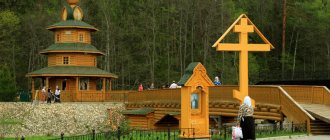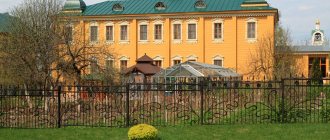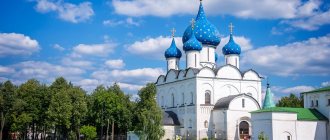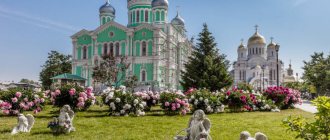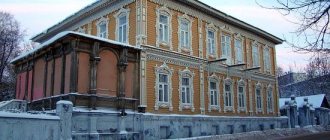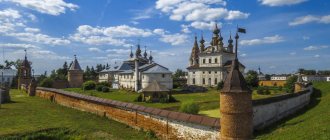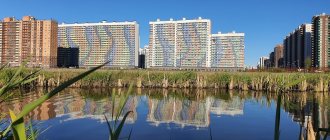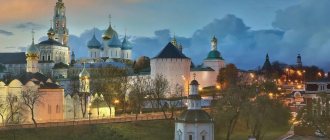Mir
Russia Moscow region Kolomna Brusensky Monastery Map loading in progress...
{"format":"leaflet","minzoom":false,"maxzoom":false,"limit":50,"offset":0,"link":"all","sort":[""], "order":[],"headers":"show","mainlabel":"","intro":"","outro":"","searchlabel":"\u2026 \u0441\u043b\u0435\ u0434\u0443\u044e\u0449\u0438\u0435 \u0440\u0435\u0437\u0443\u043b\u044c\u0442\u0430\u0442\u044b","default":"","import-annotation":false,"width ":"auto","height":"350px","centre":{"text":"","title":"""link":"""lat":55.1034700000000015052137314341962337493896484375,"lon": 38.75426999999999821966412127949297428131103515625,"icon":""},"title":"","label":"","icon":"","lines":[],"polygons":[],"circles":[ ],"rectangles":[],"copycoords":false,"static":false,"zoom":8,"defzoom":14,"layers":["OpenStreetMap"],"image layers":[] ,"overlays":[],"resizable":false,"fullscreen":true,"scrollwheelzoom":true,"cluster":false,"clustermaxzoom":9,"clusterzoomonclick":true,"clustermaxradius":80, "clusterspiderfy":true,"geojson":"","clicktarget":"","showtitle":true,"hidenamespace":false,"template":"","userparam":"","activeicon": "","pagelabel":false,"ajaxcoordproperty":"","ajaxquery":"","locations":[{"text":"\u003Cb\u003E\u003Ca href=\"/palomnik/%D0% 91%D1%80%D1%83%D1%81%D0%B5%D0%BD%D1%81%D0%BA%D0%B8%D0%B9_%D0%BC%D0%BE%D0%BD% D0%B0%D1%81%D1%82%D1%8B%D1%80%D1%8C\» title=\»\u0411\u0440\u0443\u0441\u0435\u043d\u0441\u043a\u0438\u0439\ u043c\u043e\u043d\u0430\u0441\u0442\u044b\u0440\u044c\»\u003E\u0411\u0440\u0443\u0441\u0435\u043d\u0441\u043a\u0438\u0439 \u 043c\u043e\u043d\u0430\ u0441\u0442\u044b\u0440\u044c\u003C/a\u003E\u003C/b\u003E\u003Chr /\u003E\u003Ca href=\"/palomnik/%D0%A1%D0%B2%D0%BE%D0% B9%D1%81%D1%82%D0%B2%D0%BE:%D0%90%D0%BD%D0%BD%D0%BE%D1%82%D0%B0%D1%86%D0%B8 %D1%8F\» title=\»\u0421\u0432\u043e\u0439\u0441\u0442\u0432\u043e:\u0410\u043d\u043d\u043e\u0442\u0430\u0446\u0438\u044f\»\u003E\ u0410\u043d\u043d\u043e\u0442\u0430\u0446\u0438\u044f\u003C/a\u003E: \u043e\u0434\u0438\u043d \u0438\u0437 \u0434\u0432\u044 3\u0445\u043c\u043e\u043d \u0430\u0441\u0442\u044b\u0440\u0435\u0439 \u043d\u0430 \u0442\u0435\u0440\u0440\u0438\u0442\u043e\u0440\u0438\u0438 \u041a \u043e\u043b\u043e\u043c\u0435 \u043d\u0441\u043a\u043e\u0433\u043e \u041a\u0440\u0435\u043c\u043b\u044f \u0432 \u041a\u043e\u043b\u043e\u043c\u043d\u0435 . \u041e\u0441\u043d\u043e\u0432\u0430\u043d \u043f\u043e \u0443\u043a\u0430\u0437\u0443 \u0446\u0430\u0440\u044f \u0418\u043 2\u0430\u043d\u0430\u0413\u0440 \u043e\u0437\u043d\u043e\u0433\u043e \u0432 1552 \u0433\u043e\u0434\u0443. " u043c\u0443\u0436\u0441\u043a \u0438\u043c \u2014 \u043f\u043e \u043f\u0440\u0435\u0434\u0430\u043d\u0438\u044e, \u0435\u0433\u043e \u043f\u0435\u0440\u0 432\u044b\u043c\u0438\u043d\ u0430\u0441\u0435\u043b\u044c\u043d\u0438\u043a\u0430\u043c\u0438 \u0431\u044b\u043b\u0438 \u0443\u0447\u0430\u0441\u0442\u0 43d\u0438\u043a\u0438\u041a\ u0430\u0437\u0430\u043d\u0441\u043a\u043e\u0433\u043e \u043f\u043e\u0445\u043e\u0434\u0430.","title":"\u0411\u0440\u0443\u0441\u0 435\u043d\ u0441\u043a\u0438\u0439 \u043c\u043e\u043d\u0430\u0441\u0442\u044b\u0440\u044c","link":"","lat":55.10347000000000150521373143419623 37493896484375,"lon":38.75426999999999821966412127949297428131103515625,"icon": ""}],"imageLayers":[]}
55.103513; 38.753582
Russia, Moscow region, Kolomna, Brusensky lane
Kolomna, Moscow region
Russia
Telephone
Brusensky Convent in honor of the Dormition of the Blessed Virgin Mary
- one of two monasteries on the territory of the Kolomna Kremlin in Kolomna. Founded by decree of Tsar Ivan the Terrible in 1552. Initially it was a man's place - according to legend, its first inhabitants were participants in the Kazan campaign.
History[edit]
The Brusensky Monastery in Kolomna was founded in the 16th century. The monastery was formed around the ancient Assumption Church during the 16th-19th centuries. The economic heyday of the monastery occurred in the middle of the 19th century, when, on the initiative of Abbess Olympias, the Exaltation Cathedral, residential stone buildings and buildings for economic purposes were built. The most noteworthy in the desert is the tented Assumption Church, dated 1552. It was built at the behest of Ivan the Terrible in honor of the capture of Kazan.
With the construction of a cathedral in the monastery in honor of the Exaltation of the Holy Cross (1852-1855) according to the design of the architect A.S. Kutepov, with further processing of facade planes by V.E. Morgan, the Assumption Church is losing its dominant role. In Soviet times, the temple was beheaded, and now ugly faceted drums are erected above the high attic, more like cheap props, introducing dissonance into the appearance of the church.
Pages of history, Brusensky Monastery
Here, as in the Bobrenev Monastery, the fence towers with the construction of a volume from cylinders of decreasing height and width attract attention. Made of white stone, they stand out against the terracotta surface of the brick walls. According to art critic prof. M. Ilyin’s fence was erected according to the design of the architect M. Kazakov, who drew up the plan for the Kolomna Kremlin, built the bishop’s palace and some other buildings in the city.
Restoration of the monastery after decline
During the Time of Troubles, the Brusensky Monastery suffered greatly and fell into decay. But after that the monastery is restored, as a maiden monastery. In 1698, a sudden, devastating fire swept through the monastery. Only the Assumption Church remained untouched, and the cells and four wooden churches were destroyed in the flames. But the inventory of 1701 depicts a fairly prosperous structure of the monastery. In 1725, the question arose about the abolition of the monastery as an independent unit.
Since the middle of the 18th century, wooden buildings were gradually replaced by stone ones. Thus, part of a stone fence with a gate with a white-stone stepped attic topped with a fragment of a white-stone fluted column was erected.
In 1818, the abbess of the Brusensky Monastery bought the Ivanovo Gate of the Kolomna Kremlin, “disintegrated in many places,” for scrapping in order to use their bricks for “the monastery fence, which, in addition to the front wall, was wooden.” But they were broken only in the 20s of the 19th century.
Large works that marked the heyday of the ancient monastery began in the middle of the 19th century under the abbess Olympias, known in the world as Olga and coming from a Cossack noble family. She was appointed abbess of the Brusensky Monastery in 1848 by order of Metropolitan Philaret of Moscow and Kolomna, a native of Kolomna.
Brusensky Monastery, pages of history, view from a distance
On the initiative of Mother Superior Olympias, the monumental Holy Cross Cathedral, three large stone buildings and outbuildings are being erected. In 1848, on the ramparts of the 14th - 15th centuries, a western cell building was erected, which differed from the northern one in simpler decoration. In 1850 - 1852, a two-story house with a mezzanine for the abbess and a monastery refectory was built in the style of late classicism. The main upper floor of this house was heated by warm air coming from below into decorative stoves - heaters. Here were the personal chambers of the abbess, the rooms of her cell attendants and two large halls for ceremonial receptions.
Subsequently, the improvement of the monastery continued. On August 28, 1883, under Abbess Angelina, Metropolitan Ioannikiy of Moscow and Kolomna consecrated the warm Assumption Church in the pseudo-Russian style (architect Elling). The building in which the temple was located also included an almshouse. At the same time (in 1881 - 1883) the Assumption Church was thoroughly renovated. Small kokoshniks appeared above its cornices, the tent was sheathed in iron, old windows were expanded and new windows were broken through.
Closing of the monastery and its subsequent revival
At the beginning of the 20th century, the monastery had an abbess, 28 nuns and 222 novices. In 1922, the monastery was closed, all its nuns were forcibly evicted from it, and services in churches stopped. A warehouse was located in the Cathedral of the Exaltation of the Cross; it lost five drums with domes, and during the Great Patriotic War its basement was used as a bomb shelter. The patterned cast-iron stairs leading to the temple were slowly dismantled and in the 60s and 70s they were completely broken for the convenience of approaching cars. The bell tower of the Brusensky Monastery was dismantled.
The gap in the wall where the bell tower was located remained until the 800th anniversary of Kolomna, when it was finally blocked with bricks. Also, for the anniversary, almost all the wooden buildings of the monastery were demolished, which were preserved throughout the history of the monastery, gradually being updated. Only one one-story wooden house was preserved: the artist A.V. Smirnov used it as a workshop. In 1971-1980, under the leadership of S.P. Orlovsky, the restoration of the Assumption Church was carried out, as a result of which the ancient monument was returned to its former appearance.
On August 28, 1997, the first Divine Liturgy took place in the Assumption Cathedral after many years of neglect. On October 13, 1997, Metropolitan Juvenaly of Krutitsky and Kolomna from the pulpit of this church read the decision of the Holy Synod of the Russian Orthodox Church on the resumption of monastic life in the Kolomna Assumption Brusensky Monastery and on the appointment of its abbess, nun Anastasia. In the summer of 1999, the grave of Mother Superior Olympias was discovered. In the fall of 2000, an exhibition was opened at the monastery telling about its history. By the 825th anniversary of Kolomna, the restoration of the five chapters of the Cathedral of the Exaltation of the Cross had begun.
Test sent to the sisters of the monastery
Until the end of the 17th century, the life of the sisters of the monastery was not disturbed by anything, until in 1698 the Lord sent them a test - there was a terrible fire in the monastery, which destroyed most of the buildings. Four wooden churches built by that time and all the nuns’ cells were destroyed in the fire. Only the Assumption Church survived.
For a long time the sisters could not recover from the misfortune that befell them, so in 1725 the question of abolishing the monastery was raised. In this regard, his abbess, Abbess Alexandra, and several nuns were transferred to one of the Tula monasteries. So the Brusensky Monastery (Kolomna), the name of which by that time was already widely known in Russia, would have disappeared, but local residents stood up for the sisters, among whom they enjoyed love and authority for their pious life. They sent a letter to the diocesan bishop, in which they pledged, if necessary, to maintain the monastery at their own expense, as long as it did not close. Their petition was granted, and both the abbess and the nuns who had left with her were returned to the Brusensky monastery.
Current state[edit]
The monastery has been returned to its former appearance.
In the Cathedral of the Exaltation of the Cross, a cast-iron gravestone was discovered embedded in the floor with the inscription that Marfa Guryevna Sungurova, the mother of Alexander Lvovich Naryshkin, was buried at this place in 1730. The latter was the uncle of Peter I, who had steel mills in Tula.
Over the past two years, the monastery has begun to revive as a spiritual and cultural center. The official website has appeared. To mark the anniversary of the monastery, a publication of old photographs with comments “Orthodox shrine” was published. Assumption Brusensky Monastery, pages of history.” Abbess Georgia strives to unite caring people around the monastery in order to create a Club of Friends of the Brusensky Monastery and hold “Brussensky tea parties.” Much remains to be done to return the former splendor to the walls of this ancient monastery, but the history of the monastery still continues.
Nowadays, despite the lack of funds, restoration work is being actively carried out in the monastery. The monastery cemetery has been restored. Every year, with the blessing of Metropolitan Yuvenaly, the miraculous icon of the Mother of God “Inexhaustible Chalice” from the Vladychny Monastery “stays” at the monastery. Abbess Ekaterina (Varfolomeeva, from January 10, 2013)
Temples[edit]
The tented church of the Assumption of the Blessed Virgin Mary, built in 1552 by order of Ivan the Terrible in honor of the capture of Kazan. Cathedral of the Exaltation of the Life-Giving Cross of the Lord, built in 1852-1855 according to the design of the architect A. S. Kutepov. The architectural appearance of the cathedral combines features of classicism and ancient Russian architecture.
Throughout the historical path of the Assumption Brusensky Monastery, according to the data that has reached us, a different number of churches existed in it. So, for example, at the end of the 17th century there were 5 churches in the monastery (it is known that in 1698 there was a devastating fire throughout the city and the monastery, and four wooden churches were destroyed in the flames). But at all times, the main temple of the monastery remained the tented stone church in the name of the Dormition of the Mother of God, founded at the founding of the monastery.
The true decoration of not only the monastery, but also the entire Kolomna Kremlin, was the Cathedral of the Exaltation of the Cross, built according to the design of the architect A.S. Kutepov in 1852 - 1855. To this day, both churches have been preserved, and services have been resumed in them.
Foundation of the monastery
Having successfully completed the third campaign against the Kazan Khanate, liquidating it as an independent state and annexing it to Russia, Ivan the Terrible ordered the erection of a memorial temple in Kolomna. In the same year, at the place from where the royal regiments departed for the banks of the Volga on July 3, a stone tented church was founded, consecrated in honor of the Dormition of the Blessed Virgin Mary. The Brusensky Monastery began its history with it, the first inhabitants of which were former warriors, participants in the glorious campaign.
Gradually the monastery grew, new buildings appeared on its territory. But information about the first years of the history of the monastery is very scarce and is gleaned only from inscriptions on ancient gravestones and the remains of the first monks who lived within its walls, accidentally found in the ground. However, by the end of the 16th century the monastery declared itself loudly.
Patronal holidays[edit]
Dormition of the Blessed Virgin Mary
- August 28
Icon of the Blessed Virgin Mary “Kazan”
— July 21, November 4
Exaltation of the Life-Giving Cross of the Lord
- September 27
John Chrysostom, saint
— November 26
Cathedral of the Three Saints
- 12th of February
Memorable days of the monastery
Memory of the new martyrs - sisters who labored in the Brusensk monastery:
December 15 – Venerable Martyrs Antonina (Stepanova) and Maria (Zhuravleva) and Venerable Confessor Vera (Grafova)
March 20 – Venerable Martyrs Ksenia (Petrukhina) and Anna (Gorokhova)
Years of prosperity
From surviving documents it is known that thanks to the generous contributions made by pilgrims, the central church of the Assumption of the Blessed Virgin Mary was decorated with an iconostasis, the basis of which was the Deesis, consisting of eleven icons on gold. The Gospel was kept in her altar in a massive silver frame decorated with precious stones.
The monastery library was also famous, in which many books were kept - both liturgical and intended for pious reading. Some of them were made on parchment. But the main treasure of the monastery was the miraculous icon of the Kazan Mother of God - the first copy of the image that was revealed in 1579.
How to get there[edit]
Address:
Russia, Moscow region, Kolomna district, Kolomna, Sovetsky lane, 3
Website:
https://www.ubdm.ru/
Directions
1. On your own: from the Kazansky railway station by train to the station. Golutvin, then by tram or minibus to the Kolomna Kremlin.
2. By car: along the Novo-Ryazanskoe highway to Kolomna (112 km).
3. By public transport: from the station. metro station "Vykhino" by bus number 460 to Kolomna - stop. on request “Square of Two Revolutions” (travel time 1.5 – 2 hours). Entrance to the Kremlin along Lazhechnikov Street. By railway transport: from the Kazan station by electric train “Moscow-Golutvin” or “Moscow-Ryazan” to the station “Golutvin” (travel time – 2-2.5 hours).
Next we take tram No. 3, minibus No. 10U, 18 to the stop. "Two Revolutions Square" or any bus going to the Old Town. Entrance to the Kremlin is along Lazhechnikov Street or at the Yamskaya Tower.
Pilgrim[edit]
Schedule of services
In the Assumption Brusensky Convent, services are held daily.
Hours, Divine Liturgy:
7:30 on weekdays
8:00 on Saturday
8:30 on Sunday 16:30 Evening Worship
An akathist in honor of the Icon of the Mother of God of Kazan before the revered image with remembrances of health is read on Sunday at 8:00, on weekdays at 15:00.
Every Sunday at the end of the Divine Liturgy, a water prayer service is performed.
Services are held in the Assumption Church of the monastery, which is open to the public throughout the day.
Confession in the monastery takes place in the evening (at the evening service)/in the morning.
Excursions to the territory are conducted only by Pilgrimage guides. (Tour guides of travel companies and individuals who have not been accredited at the Pilgrimage Center are not allowed to conduct excursions).
Telephone
Assumption Brusensky Convent: (496) 615-06-36.
Pilgrimage: +79030015665
Ordeals of the 20th century
During the Soviet period, the Brusensky Monastery in Kolomna was closed, the nuns were expelled, and church services were stopped. A warehouse was placed in the Church of the Exaltation of the Cross, which by that time had been deprived of its tented domes. Over time, almost all outbuildings were destroyed. In general, the monastery shared the fate of most Russian monasteries. Neither the fires nor the disasters of the Time of Troubles were as destructive for him as the rise to power of the “God-bearing people” (the expression of Leo Tolstoy).
The Brusensky Monastery (Kolomna), photos of which are presented in this article, began to revive only with the onset of perestroika. In 1997, for the first time in six decades, the Divine Liturgy was celebrated in the Assumption Church, which had been restored by that time. At the same time, the leadership of the Moscow Patriarchate made a decision to resume monastic life.
Photo[edit]
- Assumption Church, Brusensky Monastery
- Refectory of the Assumption Church
- Icon “St. Philaret, Metropolitan of Moscow” with a particle of relics
- Consecration of crosses
- Holy Cross Cathedral of the Assumption Brusensky Monastery in the Kolomna Kremlin..
- Icon “Holy New Martyrs and Confessors of the Brusensky Monastery.”
- Elevation of nun Catherine to the rank of abbess
The destruction of the monastery during the Time of Troubles
The peaceful life of the monastery was interrupted by dramatic events that took place during the Time of Troubles. Quiet provincial Kolomna then faced many trials. She saw the invasion of the Polish invaders, and both False Dmitrievs, and the bloody gangs of Bolotnikov. In those years, due to incessant looting, the monastery fell into complete decline and practically ceased to exist. When the cruel time passed and its revival began, it was converted into a women's monastery.
By the way, the name itself - Brusensky Monastery - causes controversy among researchers. Some interpret it as a derivative of the Old Russian word "ubrus", which means "women's scarf". However, there is another point of view: “Brussensky” - from the word “beam”, that is, a wooden pole that was used to make a fence. One can only guess which option is closer to reality.
